25 Best Dungeons and Dragons Video Games Ever
From dungeon crawlers to beat-em-ups, these are the best video games based on the revolutionary Dungeons and Dragons universe.
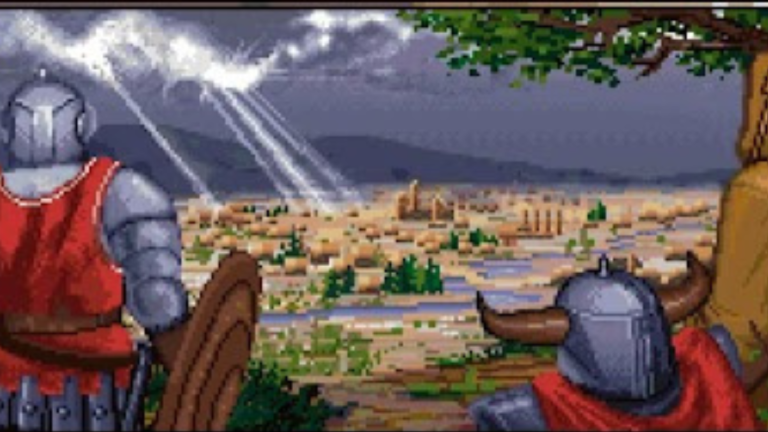
Dungeons & Dragons is one of the most influential franchises in gaming history. Since it was published in 1974, the pen-and-paper roleplaying game has been turned into books, comics, cartoon series, action figures, movies, and even a breakfast cereal! Sure, it’s had its share of controversies (some unfounded, some extremely valid), but this game’s influence has withstood the test of time and helped millions of people across decades create memories of glory, fellowship, and that most powerful magic of all: A well-placed critical hit turning your Dungeon Master’s hand-crafted boss monster into a fine red smear. Oh. And friendship, we guess.
But given the near-ubiquity of this franchise, it only makes sense that there would be plenty of video games set in one of D&D’s various worlds. So if you can’t get a group together, or you’re just dying to indulge in a deep and primal desire to pretend to be an elf, there are plenty of video games out there to whet your appetite. From hack-and-slash grind fests to deep storytelling experiences, here are twenty-five of the best D&D games out there! Just keep in mind that we’ll be looking at games that use the D&D name or are set somewhere in the greater D&D universe.
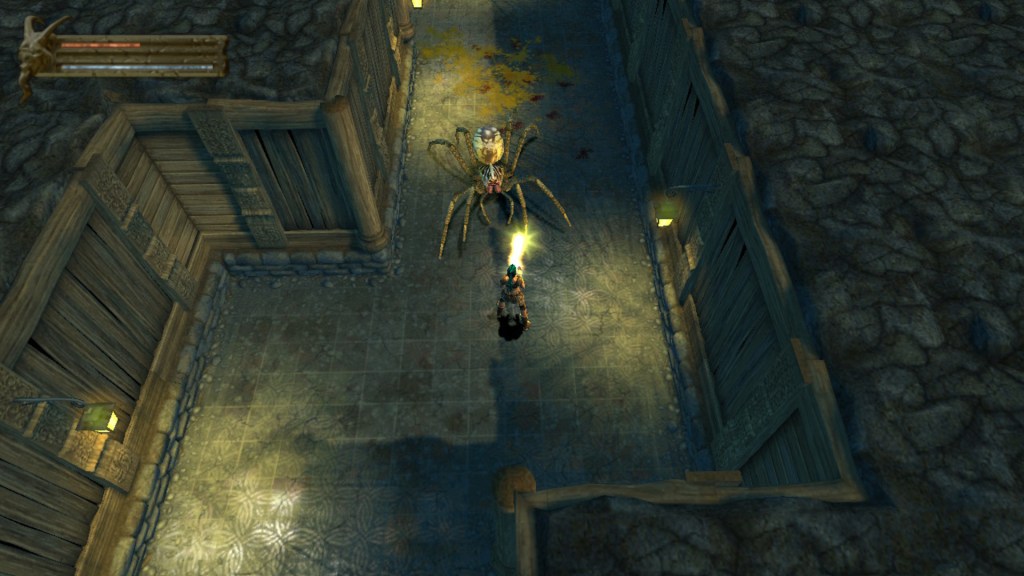
25. Baldur’s Gate: Dark Alliance
Swapping the series’ turn-based and tactical combat for fast and furious Diablo-esque gameplay, this PS2 game stands out as something of a dark horse on the list.
While it’s certainly fun, its attachments to what makes D&D great are tenuous at best. Upgrades and spells share the names of what’s in the book, and you’re fighting iconic D&D monsters like Beholders, Bulettes, and Bugbears, but this an ARPG that is wearing D&D like a skinsuit. There’s very little real customization to be had here, which is a shame considering that making a character who feels distinctly yours is what makes games like D&D so fun.
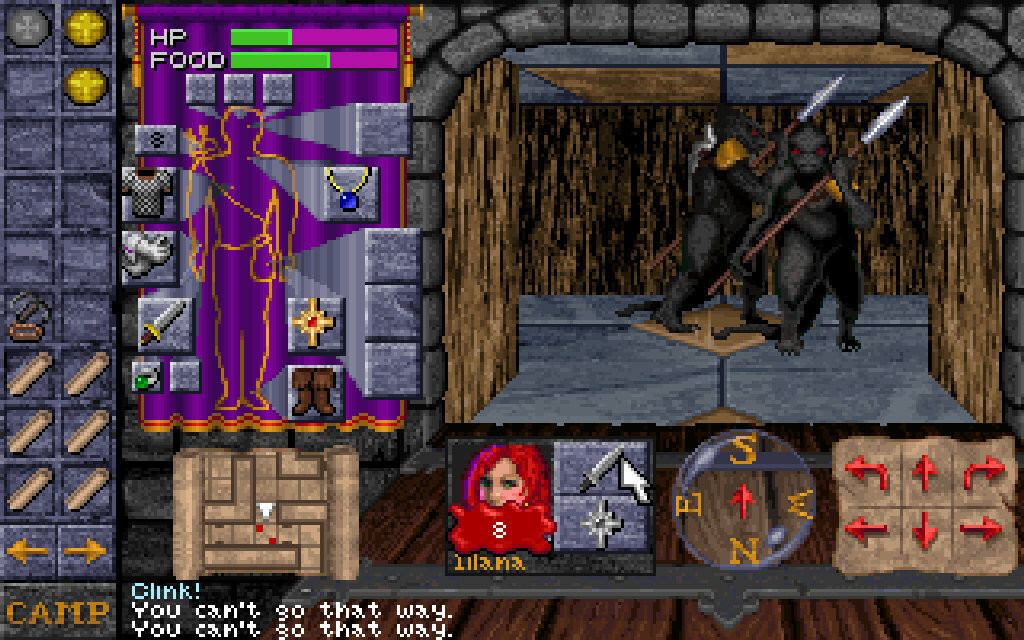
24. Dungeon Hack
Dungeon Hack, we need to talk. Yes, you refined the gameplay of your predecessors to a razor’s edge. Yes, you’re easy to pick up and play. And yes, your pixel art holds up. But like Tom Cruise’s smile, there’s something off about you. You’re pleasant at first, but there’s just nothing behind those pretty pixels. Dungeon Hack’s randomly generated labyrinths get very old very fast, and its “story” feels as if someone managed to make a Dungeon Master-flavored Lacroix.
The game was licensed by D&D’s creators and uses D&D‘s rules, but aside from the numbers and the wanton violence against certain iconic monsters like Beholders and Mimics, very little about this game really feels like D&D. So If you want to kill both goblins and time, this is a strong choice, but there’s very little else to get excited about here.
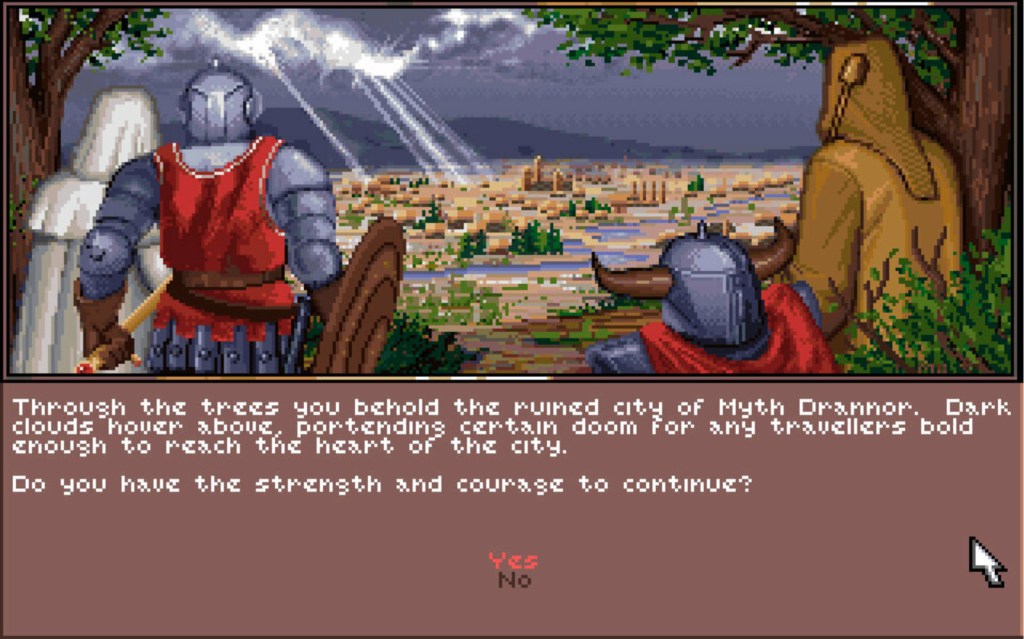
23. Eye of the Beholder 3: Assault On Myth Drannor
The Eye of the Beholder series brought a host of innovations to dungeon-crawling RPGs by blending first-person exploration with an intriguing combination of real-time and turn-based combat mechanics that emphasized timing and cooldowns in ways that are still being used today.
While Eye of the Beholder 3 is certainly solid, it’s also the weakest overall entry in the series with less exploration and a less engaging story than its predecessors. Don’t worry, though. We’ll have plenty more to say about those games in just a bit.
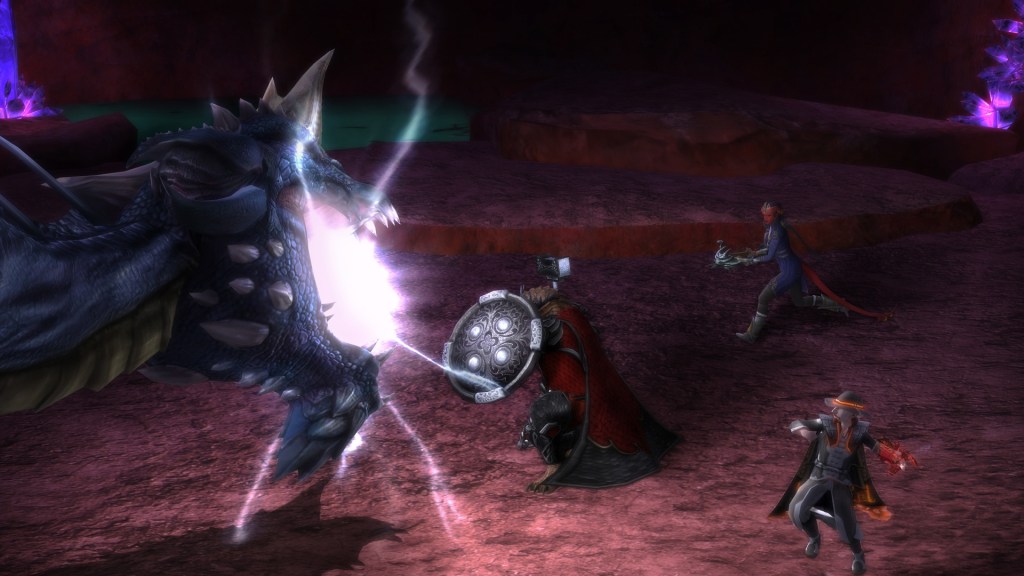
22. D&D Online
Surprisingly, this isn’t the first Dungeons and Dragons MMORPG. In fact, it’s not even the second. But D&D Online certainly has some staying power.
Set in the D&D realm of Eberron (which takes its inspiration from pulp action stories like Indiana Jones and Alan Quatermaine), D&D Online is a solid, fun MMORPG that’s still going strong today. However, like many older MMORPGs, it’s begun to develop a terminal case of “Free-to-play syndrome:” a devastating illness that claims MMORPGs all over the world. Symptoms include content droughts and predatory monetization. A pity we couldn’t have caught it in time.
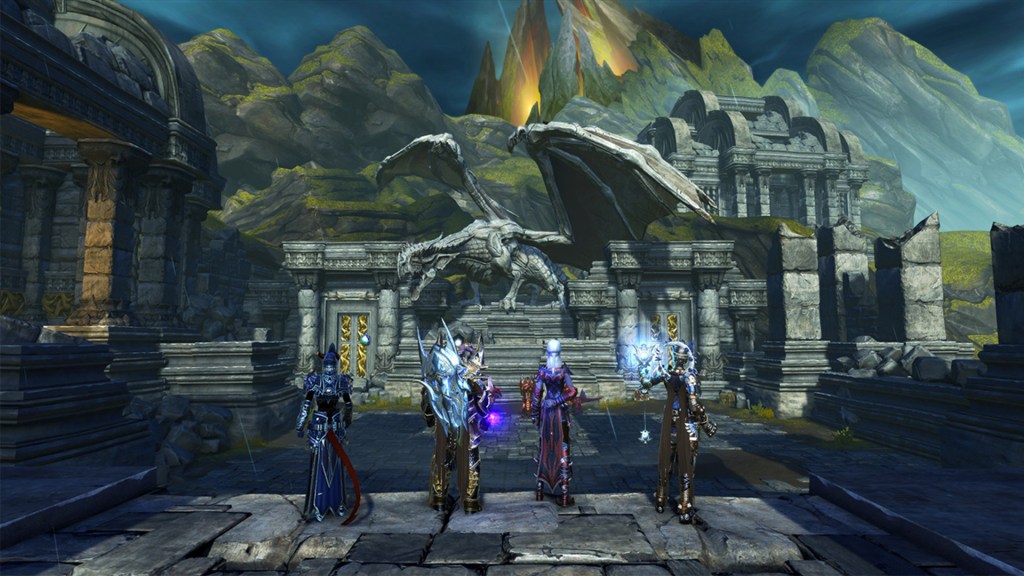
21. Neverwinter (MMORPG)
Neverwinter is D&D Online’s over-acheiving younger brother. The one who’s taking extracurriculars and trying to get into a good college while D&D Online has been out of the house and still keeps asking mom and dad for money.
However, unlike D&D Online, which used a version of the tabletop game’s rules that were widely adored by fans, Neverwinter used a more recent (and decidedly less popular) ruleset as its base. So, it pulled out all the stops to prove itself and eventually grew into something distinct and interesting. Unlike D&D Online, which allowed its Free-To-Play monetization to morph into a horrific money hole, Neverwinter has put in the work to manage its condition with plentiful updates and slightly less predatory monetization plans. However, it loses points for paywalling certain classes and lineages.
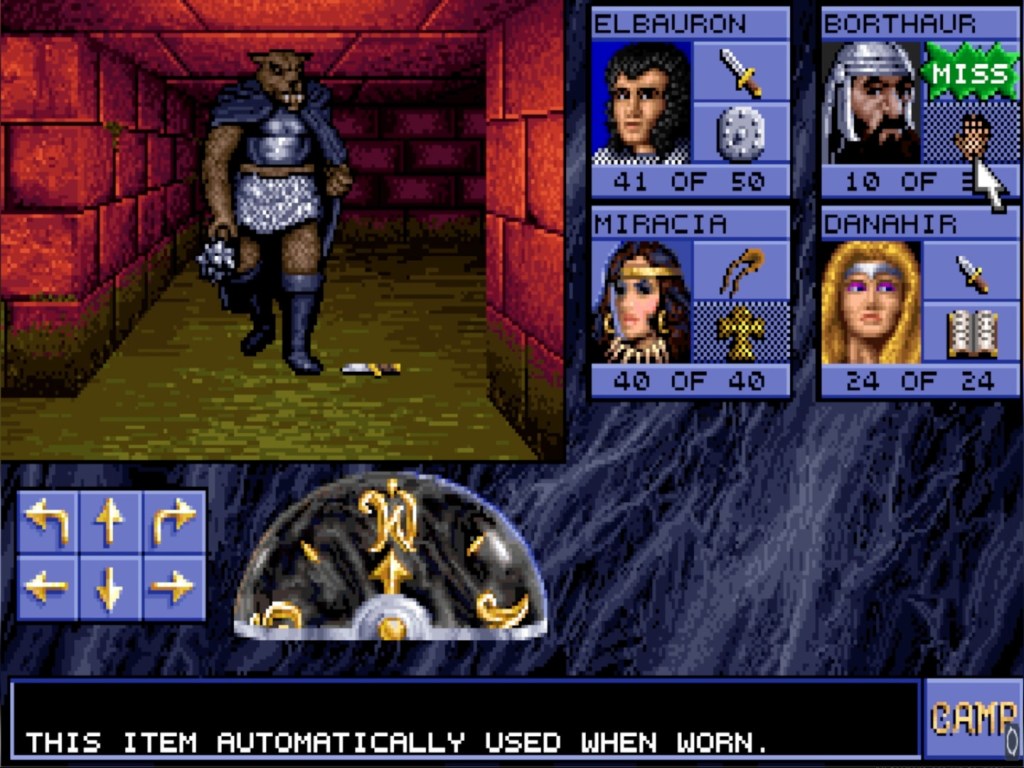
20. Eye of the Beholder
All these first-person grid-based dungeon crawlers with timing-based combat have to have come from somewhere, right? Well, behold the grandaddy of the modern dungeon crawler: Eye of the Beholder.
This title’s revolutionary gameplay went on to inspire franchises like Might & Magic and The Elder Scrolls. Innovations aside, the game provides a solid D&D experience, complete with a fully customizable party of four adventurers who must delve into sewers, caverns, ruins, and various other subterranean locales. Eventually, parties must confront Xanathar: a multi-eyed eldritch horror with plans to overtake the city of Waterdeep with the help of his own private army.
Intriguing set-up aside, there’s actually very little to the game in terms of story, which is why it’s not as high on the list.
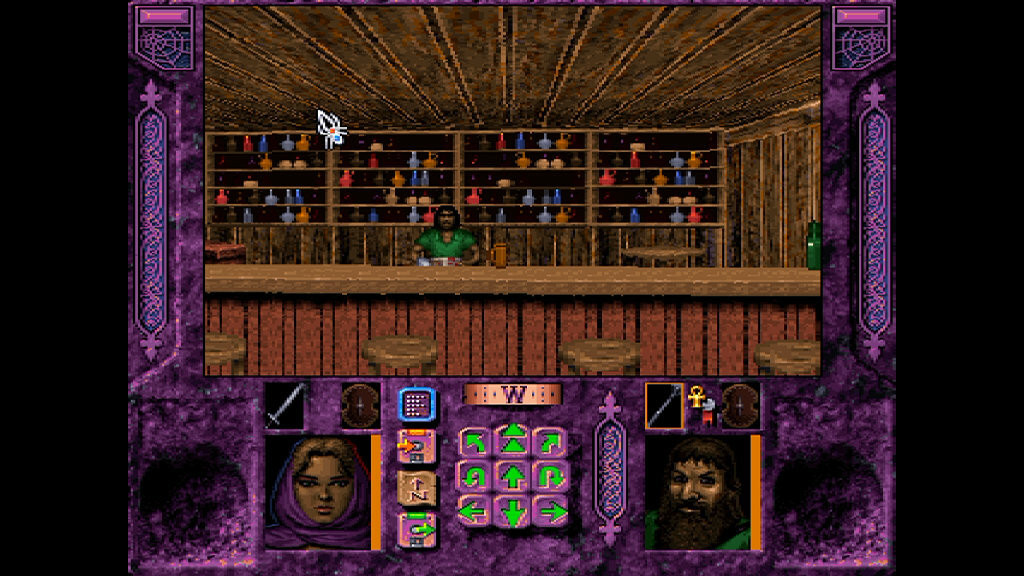
19. Menzoberranzan
I hope you like first-person dungeon crawlers, kids. Because the D&D franchise is practically drowning in them.
As fun to play as it is hard to pronounce. Menzoberranzan (Menn-Zow-Bahrr-Ehn-Zann) sends players on a journey to explore a mysterious subterranean world called The Underdark. In the tabletop game, this dark realm beneath the earth is home to eldritch horrors, mad cults, and a tyrannical empire of dark elves known as the Drow. However, if you’re a D&D veteran, you likely rolled your eyes at the mention of the Drow, and I don’t blame you. Their lore ranges from goofy to just plain gross, and it’s all aged like milk. Worse yet is the game’s inevitable appearance of D&D’s poster-elf, Drizzt Do’Urden, who has saved the world so many times at this point in the canon that you’re left wondering why he isn’t doing anything to help out. Then again, that’s something of a common issue in D&D’s Forgotten Realms setting (I’m looking at you, Elminster).
Still, despite the weaknesses in the story, there’s some solid gameplay here. You build a party of two adventurers and go on a quest to explore the Underdark. Even though almost all of the game takes place underground, the game does offer a few novelties here and there in terms of set design. Granted, it’s nowhere near the variations of later titles, but it’s still worth picking up. Especially if you love the gameplay of a certain vampire-filled entry on this list.
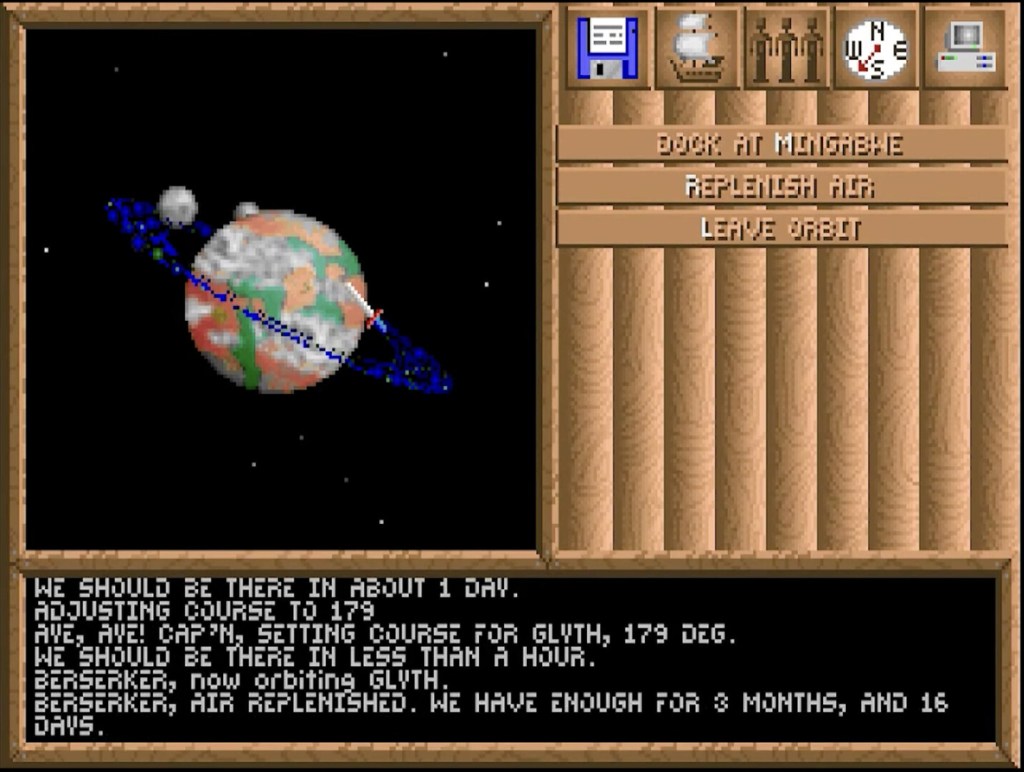
18. Spelljammer: Pirates of Realmspace
D&D has a multitude of different universes to play in. From standard fantasy fare like the Forgotten Realms and Greyhawk to stranger shores like the brutal Dark Sun and magically steampunk Eberron. Not to mention the multitude of homebrewed worlds conjured by the Red-Bull-fueled imaginations of dungeon masters the world over. Enter Spelljammer: a D&D universe that sought to unite all those disparate worlds by having them be literally planets in a galaxy that one could travel via magical starships (the titular spelljammers.)
The game makes the most of the setting, taking hints from the Sid Meiers game Pirates! You pick a class and race, hop aboard a magical spaceship, and travel the worlds, trading goods and boarding ships to get at the delicious loot inside. While you can battle ship-to-ship with cannons and magical spells, it’s way more fun to just crash into your enemy, board their vessel, and slaughter everyone inside like a true buccaneer. The game’s graphics and UI have certainly aged poorly, but once you get used to things, it’s a solid title with a lot to offer.
Pirates of Realmspace is one of the only games set within this magical sci-fi mashup universe so far, which is a real shame. After all, any Deep Rock Galactic player can tell you that nothing is cooler than dwarves in space!
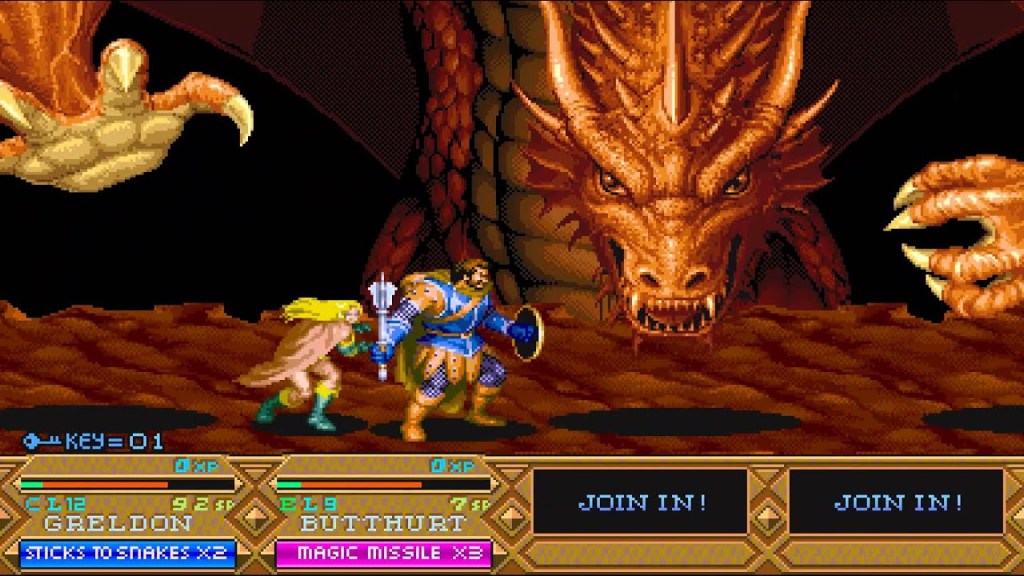
17. Dungeons and Dragons: Tower of Doom
With no character creation and side-scrolling combat that eschews the turn-based tactics the tabletop game is known for, it’s easy to think this is just some cynical attempt to cash in on the D&D property during the era of Arcade beat-em-ups. However, Tower of Doom is more than a cynical tie-in. The game goes to great lengths to capture the spirit of a D&D campaign.
Taking hints from some of the older editions of the tabletop rules, a team of up to four players chooses between a fighter, cleric, elf, or dwarf (back when that race was the class) to take on enemies across the world of Mystara. Like a real D&D adventure, players could choose their path through the game, taking branching roads to different levels. And the presence of one class or another could even open up new paths or unlock treasures you might otherwise have missed! Add in the furious fun of a golden-age-era Capcom beat-em-up, and you’ve got a recipe for a great time.
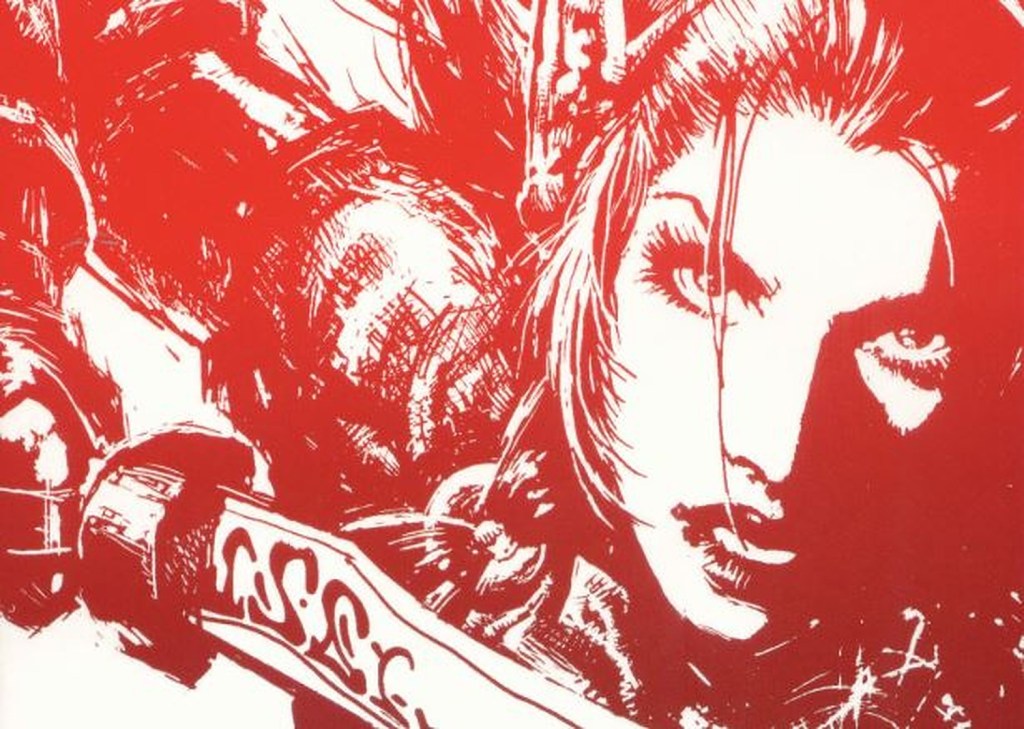
16. Forgotten Realms: Demon Stone
Demon Stone and Dark Alliance offer two different answers to the same question. After all, they’re both PS2-era action RPGs with pre-set characters and a linear story. But while Dark Alliance was content to simply cling to the trappings of D&D, Demon Stone tries to use the game’s oft-overused Forgotten Realms setting to tell a compelling story.
Penned by D&D writer R.A. Salvatore, Demon Stone follows the travels of a band of adventurers united in an alliance of necessity after a battle between orcish armies imperils their homeland. It’s an engaging story with tight dialogue and an endearing dynamic between the game’s pre-written heroes.
Expanded narrative aside, Demon Stone deviates from its ARPG cousin by allowing players to access all three party members and freely switch between a warrior, rogue, and mage at the drop of a hat (and all the unique abilities that come with those classes).
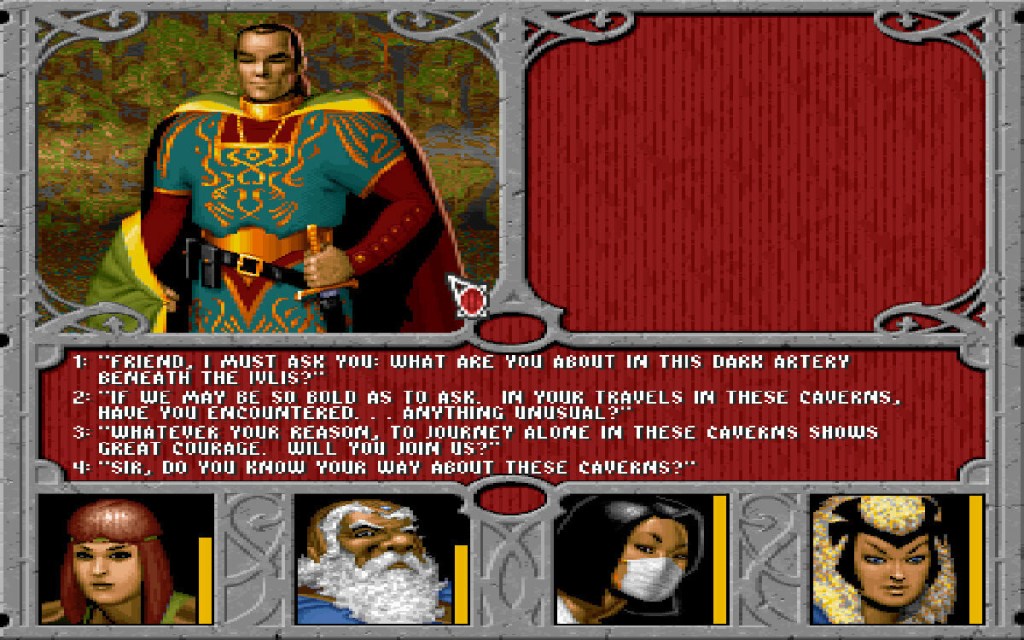
15. Ravenloft: Strahd’s Possession
Pulling away from the wizards and whimsy of the Forgotten Realms, we venture past the mists and into the gothic-horror world of Barovia.
Ravenloft: Strahd’s Possession is yet another addition to the conga line of first-person dungeon crawlers on this list. However, the game stands apart by attempting an honest-to-goodness horror experience in the D&D world. Sure, the vampires, werewolves, and zombies may seem a bit trite compared to modern horror titles, but the game’s brilliant art direction does a fantastic job of delivering a chilling experience right out of a Hammer Horror movie.
It’s also one of the first D&D games to include voice acting, which it employs to great effect. Tormented wraiths wail in agony, fearful villagers mutter in anxious tones and the titular Strahd himself speaks with a cold, imperious contempt that can send chills down your spine (even with the dated audio compression). If you like some fear with your fantasy, Strahd’s Possession will hold you firmly in its grip for hours on end.
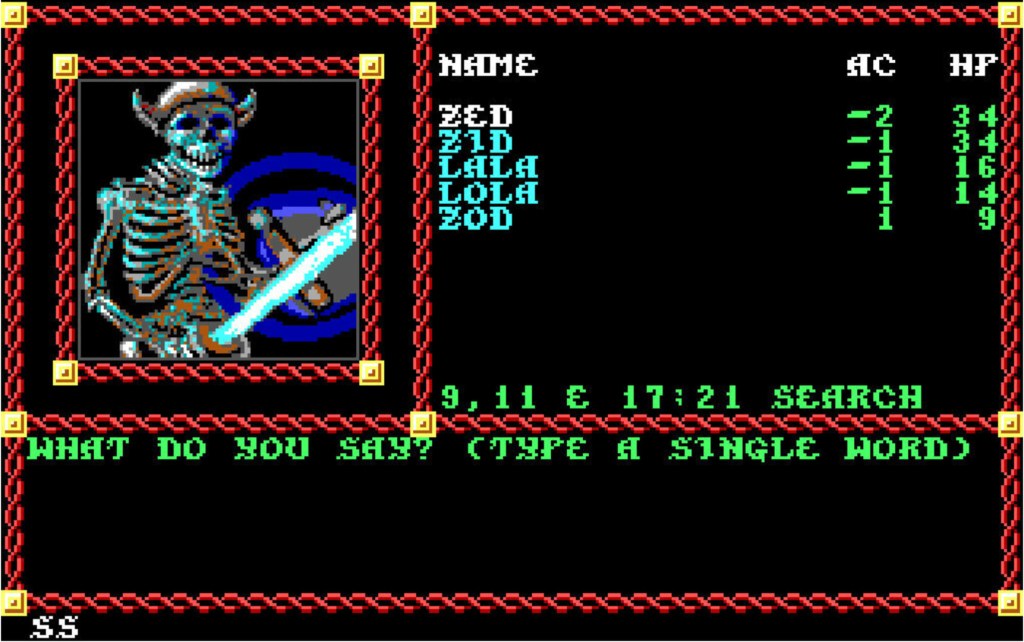
14. The Pool Of Radiance Series
This isn’t just one of the earliest D&D video games; it’s one of the earliest video game RPGs as we know them. That alone would be enough to earn it a spot inthe top 15, but add the fact that these early titles actually capture the spirit and gameplay of the original tabletop game and you’ve got something truly special.
The Pool of Radiance series is commonly known as the “Goldbox” series, as they more or less all used the same engine and had identical gameplay and graphics. Hence their shared place on this list. However, that doesn’t detract from the fact that the series does an excellent job of taking players and their custom party across the lands of the Forgotten Realms (With nary a Drizzt in sight!). While their gameplay and UI have admittedly aged poorly, I would still easily recommend these games, especially now that you can purchase the entire four-game series for relatively cheap. Now if only we could get a full remaster!
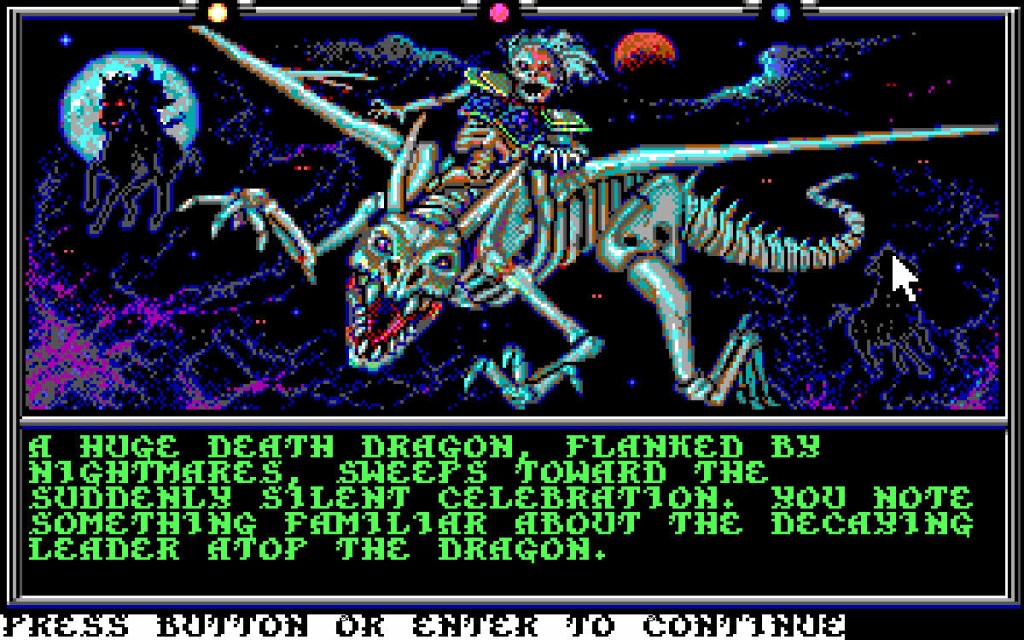
13. The Krynn Series
Like the Pool of Radiance series, the Krynn series is a collection of three games available in a single package. Set in the world of Krynn from the Dragonlance setting, this series takes the strengths of the original Goldbox collection and amplifies them with better graphics, tighter gameplay, and a relatively more in-depth story.
Just know that the early entries in the series suffer from dated graphics, even by the standards of their time. Furthermore, the first game loves to throw enemies at you that have special abilities designed specifically to screw with you after they die. So be sure to keep your heroes well-supplied for the perils ahead.
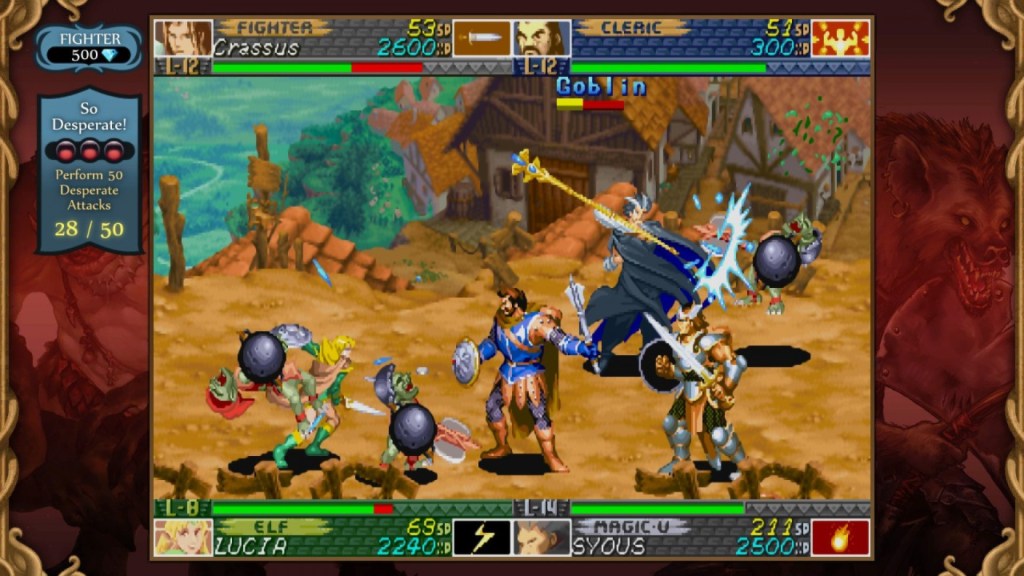
12. Shadow Over Mystara
The second result of D&D and Capcom’s torrid love affair, Shadows Over Mystara takes all the things that made Tower of Doom good and doubles down on them. There are more characters to choose from, more monsters to face, more treasure, more spells, more equipment, and even better animation! Even the controls feel tighter, with plenty of spells and special moves to experiment with as you fight your way across Mystara to battle the ferocious dragon, Synn.
Sure, the story is effectively nonexistent, but that comes with the territory for most arcade games. Like the Goldbox series, you can usually pick up both Tower of Doom and Shadows Over Mystara together, and they’re absolutely worth it.
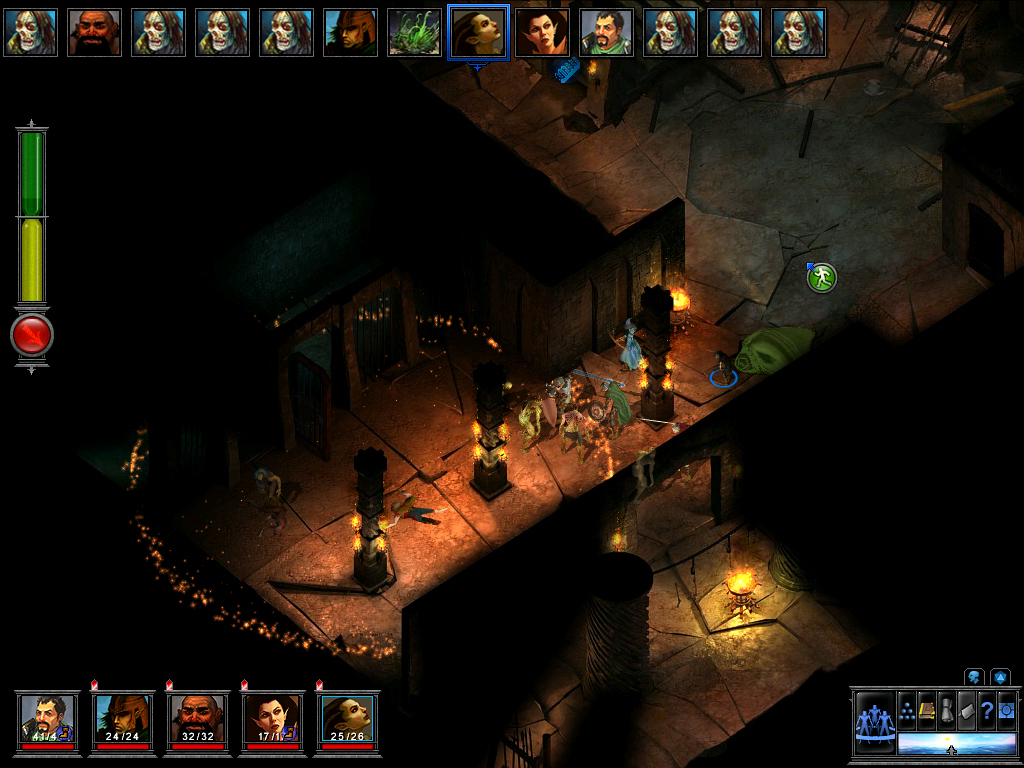
11. Temple of Elemental Evil
Created by Troika Software, Temple of Elemental Evil strives to provide a truly complete D&D experience by translating one of the game’s older campaign books into a fully realized video game. I may be a bit biased putting it this far up on the list, but I absolutely love any D&D game that allows players to make a completely custom party.
On top of that, there are plenty of moments for great roleplaying spread throughout this game, especially in the cities and villages outside the titular temple. Temple of Elemental Evil even lets you select what your party’s collective alignment is, which can dramatically change how your campaign starts. The gameplay is even incredibly faithful to the third edition rules in a way that few games since have matched.
However, Troika games tend to be great in terms of gameplay and story, but less than stellar on a technical level. The game has more bugs than a flea circus, some of which can even soft-lock your game. The 3d models are also a bit dated, though they still have a lot of charm and the animations hold up. I recommend downloading the Circle Of Eight modpack to get the best experience. That fan-made patch not only stabilizes the game but adds plenty of cut content!
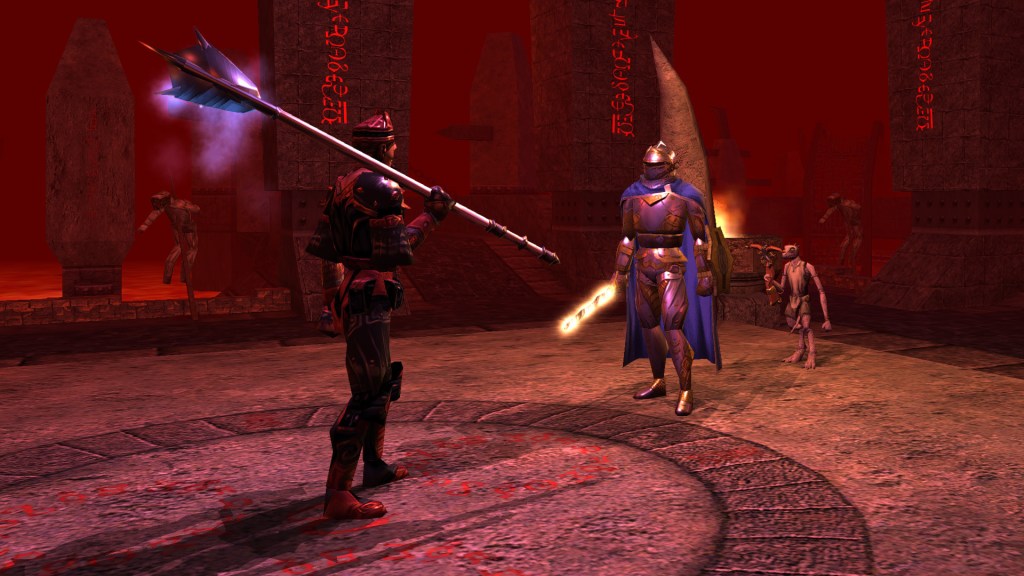
10. Neverwinter Nights
Not to be mistaken with the similarly named MMORPG, Neverwinter Nights is a BioWare RPG that attempts to create a multiplayer-friendly D&D experience where players roll their characters and explore a pre-made story. It’s an idea that a number of notable RPGs that followed would gleefully borrow.
However, unlike games that would later refine this concept (most notably, Divinity: Original Sin 2) Neverwinter Nights only lets you control one character at a time. Any non-player characters on your side will come pre-made and be directed by the game’s AI. While I’m not the biggest fan of that particular choice, the thing that places this game so high on this list is its community. Neverwinter Nights features a robust modding system that’s always been surprisingly friendly. In the decades since its release, fans have created some truly fantastic custom campaigns that you can enjoy alone or with friends.
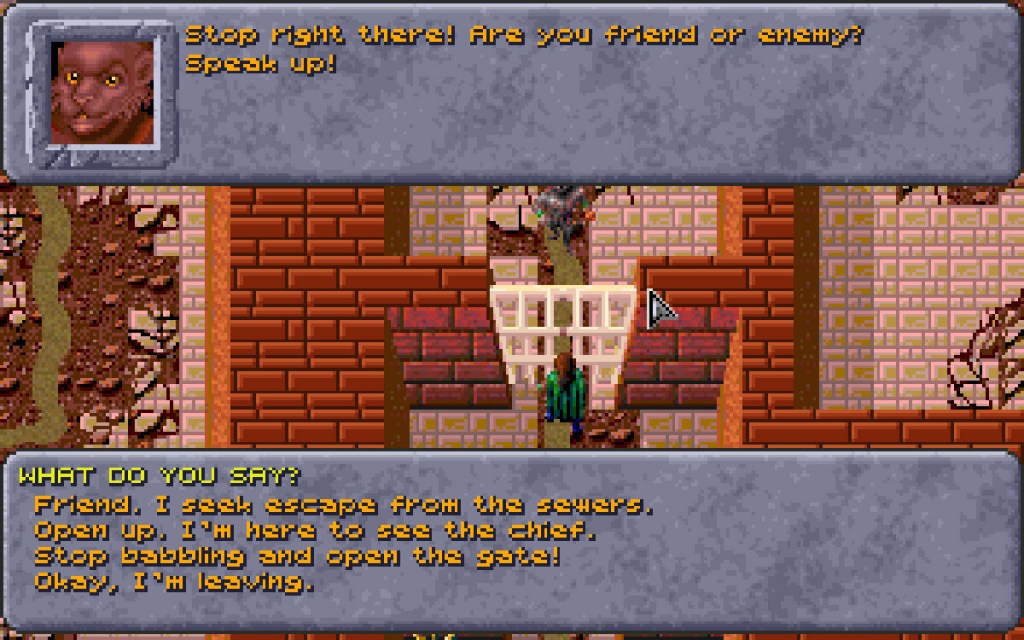
9. Dark Sun: Shattered Lands
Your earliest memories are the smell of death and the feeling of cold chains around your neck. The air is alive with the roar of bloodthirsty spectators. Through the bars of your cell, you have just witnessed a terrifying beast rip a gladiator in half. And as the doors to your cage open, you know that you must fight or share his fate.
Dark Sun: Shattered Lands is unique in every sense of the word. Set in the brutal desert world of Athas (where the gods are dead and powerful sorcerer-kings have scoured the earth of greenery in the mad pursuit of power), you play as rebellious slaves, runaway gladiators, and nomadic outcasts looking to find freedom in the desert.
The game even offers an early version of open-world gameplay that allows you to solve various problems in numerous ways. For example, when you start the game off as a prisoner in the gladiator pits of Tyr, you can either work with your fellow prisoners to hatch an escape plan or gain favor and gold with the crowd to buy your freedom. The game is full of choices, and few of them are presented via the binary of a dialogue box. You’re instead encouraged to engage with the story through gameplay. Plus, the game’s pixel art does a fantastic job of capturing the perils and wonders of the burnt world of Athas. I can’t recommend this game enough.
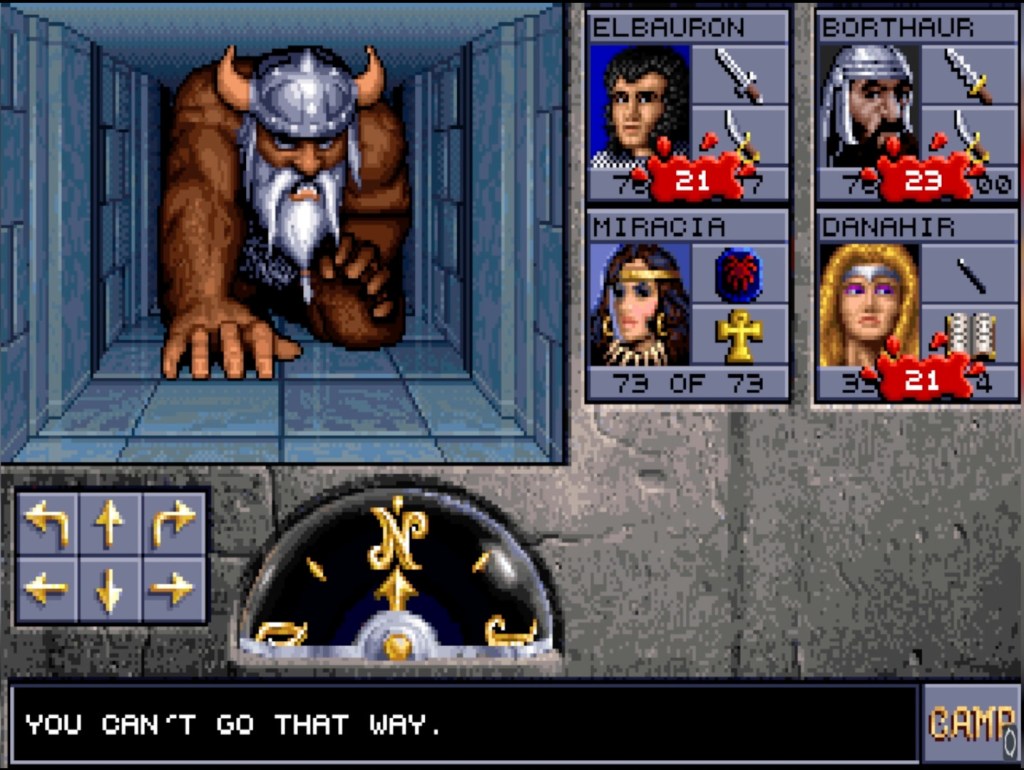
8. Eye of the Beholder 2: The Legend of Darkmoon
Simply put, Eye of the Beholder 2 is the over-achiever of this series in the best ways possible.
The original Eye of the Beholder was fun and all, but it suffered from a common problem among dungeon crawlers at that time: “Dungeon Fatigue.” This condition tragically plagued many early dungeon crawlers, where your choice of scenery was too often “dungeon with gray walls,” “dungeon with brown walls,” or, if the game was feeling really frisky, “hedge maze with green walls.”
However, Eye of the Beholder 2 does away with that issue by opening up its world and diversifying its environment. While there are still plenty of tombs and temples to plunder, there are also unique areas such as haunted forests and a wizard’s tower made entirely of gleaming silver. Meanwhile, the game’s pixel art and moments of dialogue do a lot to elevate the story and create a memorable, if by the numbers, fantasy adventure.
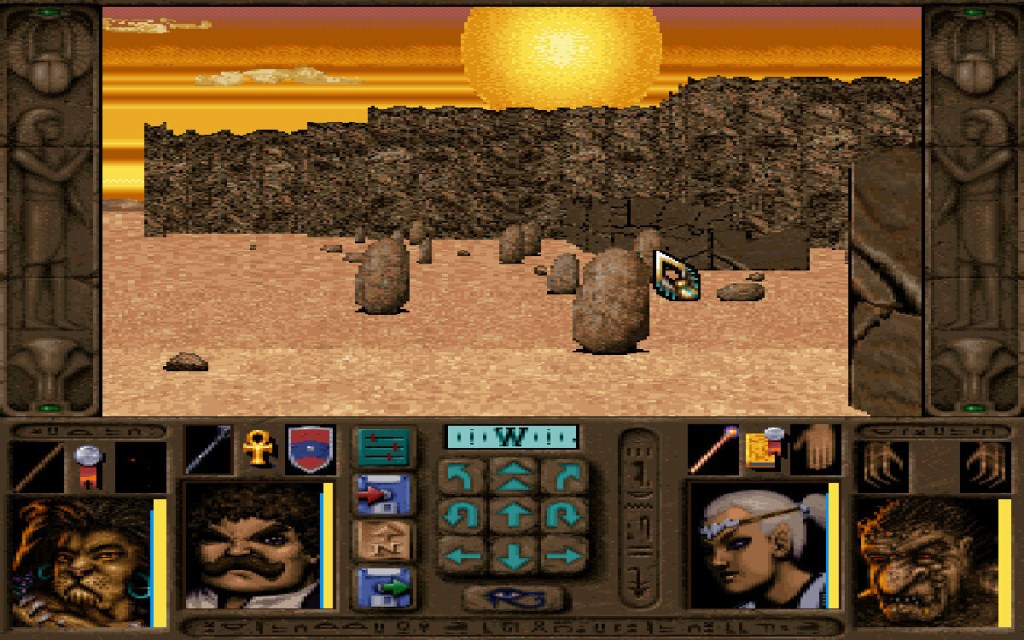
7. Ravenloft: Stone Prophet
I have to imagine the pitch meeting for this game was just some underpaid intern crossing out the word “Vampire” and writing in “Mummies???” to the uproarious applause of the executives. Mind you, Stone Prophet is still the best part of the Ravenloft duology.
Trading dark forests and vampires for scorching deserts and mummies, Stone Prophet does a great job of making players feel like they’re trapped in a hostile world as they ration water and food across a vast and unforgiving open world. Combat encounters are fast, furious, and fun. Stone Prophet’s companion choices are also some of the most unique I’ve seen in a D&D game. You can even recruit a troll to join your little desert caravan.
Like the previous entry, this title is rife with grisly, disturbing imagery and excellent audio design. The first few minutes of the game have you talking with a dying nomad whose very body is shriveling and turning to dust before your very eyes. Remarkably, it only gets worse from there. A hidden gem half-buried in desert sands, the only curse you’ll find in this game is the kind you’ll give yourself for not playing it sooner.
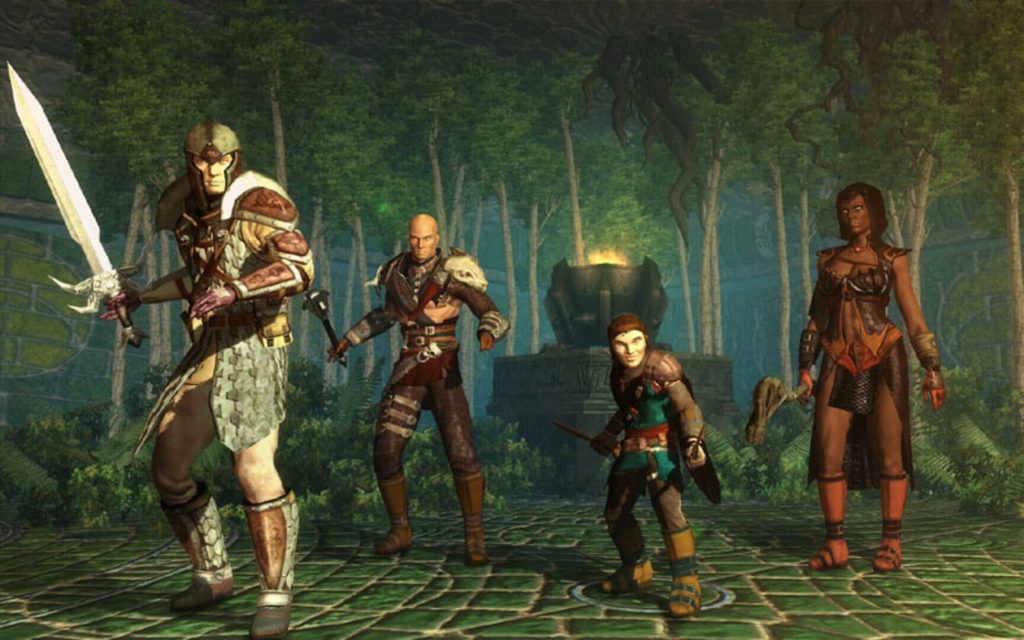
6. Neverwinter Nights 2
Neverwinter Nights 2 does what any good sequel should do: improve the strengths of its predecessor while shoring up its weaknesses.
Thanks to a more dynamic approach to dialogue the likes of which you’ll also find in later BioWare titles like Dragon Age: Origins and Mass Effect, this sequel offers greater control over your party members and a more faithful recreation of D&D‘s mechanics. Meanwhile, the game remains as mod-friendly as ever, with a strong system for multiplayer and homebrewed story campaigns.
That said, the game’s default campaign does lose some points for having characters that range from milquetoast to just flat-out annoying. That being said, expanded campaigns (like Obsidians’ Mask Of The Betrayer) more than make up for that shortcoming by delivering one of the most impactful and engaging stories in the franchise.
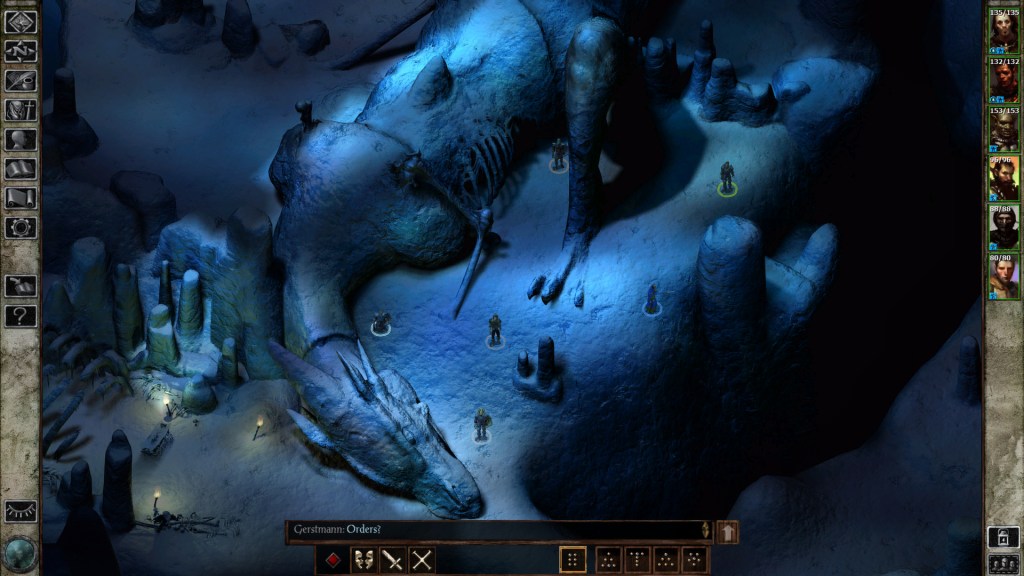
5. Icewind Dale
I mentioned in previous entries that I love a game with a fully customized party, and Icewind Dale is where that love really began.
The ability to choose things such as your character’s class and ancestry certainly isn’t novel (it’s been around as far back as the Pool of Radiance games), but Icewind Dale goes a step further by also letting you write your character’s biography. A blank textbox waiting to be filled in probably doesn’t seem like much, but it’s fertile ground for a bit of creative exploration. I used it to write my character’s backstories, personality, and even their relationships with other members of their party. I even ended up ‘shipping’ two party members: the dour paladin Konrad The Pale and the laid-back dwarf fighter, Brecka Stonehammer. It’s a great way to get more involved in the lives of your party and make their potentially permanent deaths all the more impactful.
Icewind Dale also makes the most of its isometric perspective thanks to varied environments that are creative and beautifully handcrafted. Alongside standard dungeons deep and caverns old, you’ll also explore a foundry staffed by fire giants, the tomb of a rotting dragon, and even an aquarium that has been frozen over by ice magic, its specimens trapped in frigid stillness for all time.
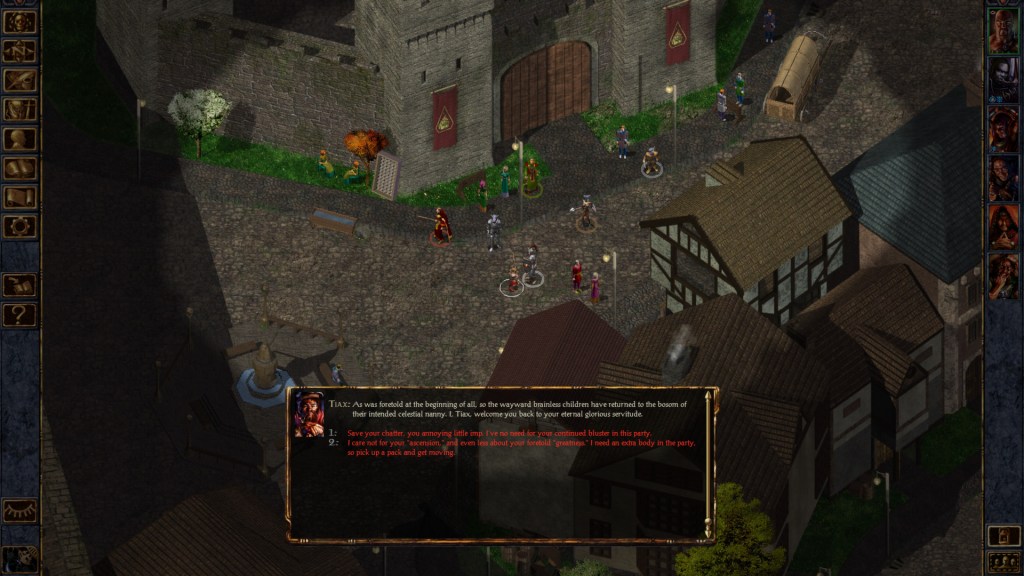
4. Baldur’s Gate
When it comes to delivering the D&D Experience, few video games can match Baldur’s Gate.
While previous D&D games offered choices in dialogue, Baldur’s Gate was one of the first to lean hard into the idea of using dialogue to determine your character’s moral and practical stances. Of course, the game was developed by Bioware, and it shows for better or worse. Most of your choices range from “Mother Teresa” to “Skeletor” in terms of binary extremes, but the game more than makes up for that with companions who are a genuine blast to have around.
Just know that this game is also prone to moments of flat-out brutality in terms of its gameplay. That’s especially true during its latter half where it will toss entire swarms of “Save-or-die” monsters at you like Basilisks who will turn party members to stone in an instant. But with some time, preparation, and a bit of meta-knowledge, you’ll come out with a fun fantasy adventure that’s well worth your time.
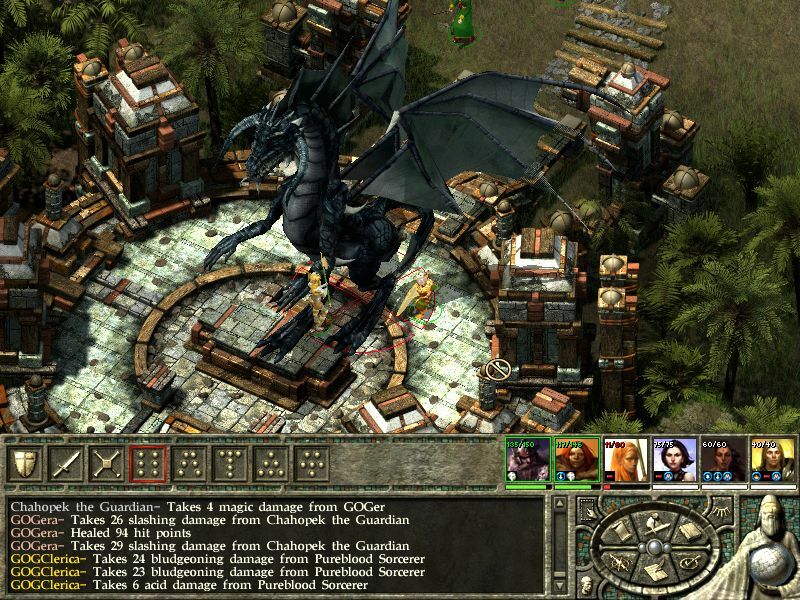
3. Icewind Dale 2
In case you haven’t noticed, most D&D games can be split into two houses: The Dungeon Crawlers and the Storytellers.
Storyteller games, like Baldur’s Gate, focus on weaving a compelling narrative with lots and lots of dialogue and choices to get you involved in the story. Dungeon Crawlers, meanwhile, focus more on gameplay, emulating the feeling of mastering combat moreso than classic roleplaying. Some may pay lip-service to the idea of a story, but more often than not their plots boil down to “A magic man did a bad thing, do violence about it.” Even Icewind Dale suffered from that problem. Its story, while engaging, was still fairly bare-bones.
But Icewind Dale 2 doesn’t just tell a good story; it pushes the game’s engine to its absolute limits. Sure, you’ll be fighting mazes full of monsters, but sometimes you’ll be fighting an advancing skirmish to keep a group of ogres from collapsing a bridge, or racing through a gauntlet of biological horrors to stop a mad flesh-shaping wizard’s plans to create the ultimate life form. The game is chock full of these interesting, detailed combat encounters that use the thrill of battle to tell an inventive and thrilling story of revenge, loss, and how ambitions can turn poisonous.
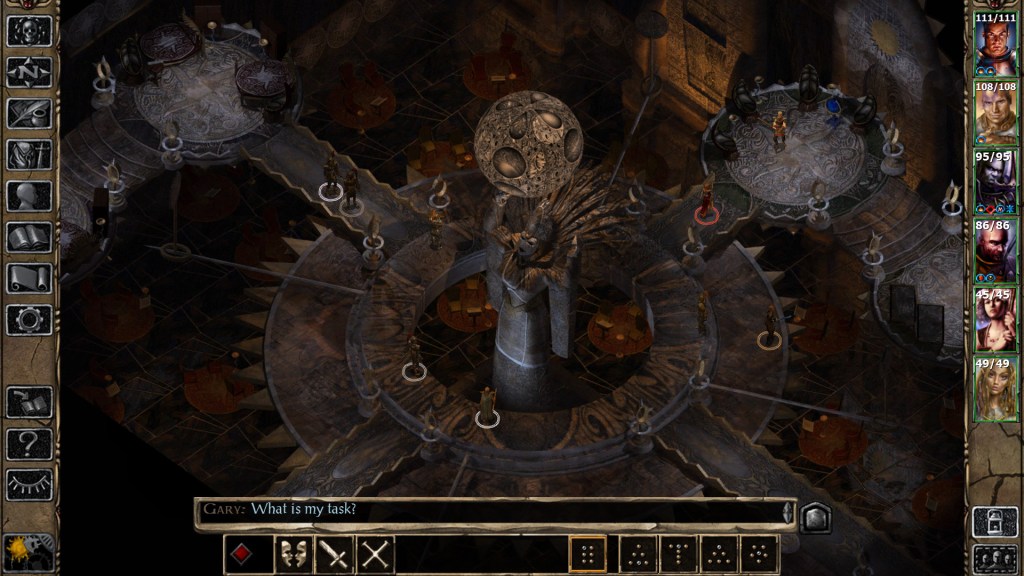
2. Baldur’s Gate 2
Larian’s upcoming Baldur’s Gate 3 seems to be promising a lot in terms of story and character. It’s an ambitious title that looks to offer an ultimate role-playing experience. So why am I talking about it when I should be talking about its predecessor? Well, even with their budget and modern gaming advantages, Larian is going to find that Baldur’s Gate 2 is a historically tough act to follow.
Every single complaint about Baldur’s Gate isn’t just improved upon in this sequel; it’s mastered. The writing is superlative, as moments of loss will leave you gutted and your characters’ personal triumphs feel monumental. The environments are varied, fantastical, and jaw-dropping even by modern standards. The game is even fully voiced by a litany of ’90s cartoon veterans who, despite their Saturday morning pedigrees, bring heart-wrenching sorrow and overwhelming joy to their performances. Baldur’s Gate 2 is more than a great D&D game; it’s a great game, period.
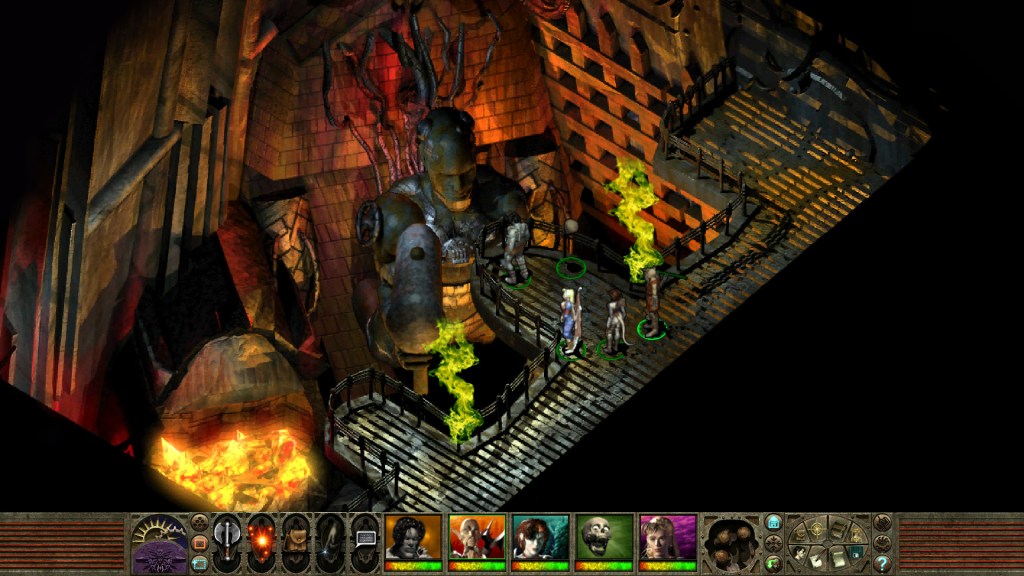
1. Planescape: Torment
What changes the nature of a man? It’s the kind of question that seems easy to answer at first, but gets more and more complex the longer you think about it. You can pore over the question like a fractal, picking apart the things that define you like unspooling a sweater. Therein lies the power of Planescape Torment: an adventure that feels less like a video game and more like interactive literature in the best possible way.
You are an amnesiac undead known only as The Nameless One: an entity who can neither remember its past nor be fully taken by death. Both seem like a bog-standard case of RPG Protagonist Syndrome, but the game uses these two key elements with surgical precision to tell a brilliant story about change, selfdom, and the nature of our place in reality. Each time we play the game we discover something new both in the game and ourselves. And really, exploring an aspect of yourself you may not be familiar with and shaking hands with your shadow to ask it why you are the way you are is the essence of role-playing. Or you can just enjoy the story and beat up some demons. That works, too.
